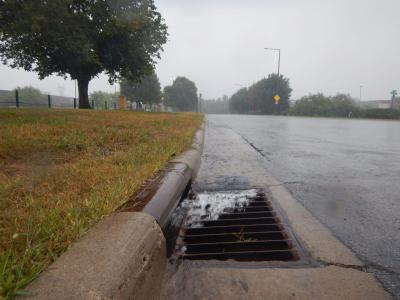Village Hall
202 South Main Street
Horseheads, NY 14845
Phone: 607-739-5691
Annual MS4 Stormwater Reports
New York State Department of Environmental Conservations Stormwater MS4 Program Overview
Small municipal stormwater sewer systems (MS4s) that are located within the boundaries of a Census Bureau defined “urbanized area” are regulated under EPA’s Phase II Stormwater Rule. This requires MS4s to develop a stormwater management program that will reduce the amount of pollutants carried by stormwater during storm events to waterbodies to the “maximum extent practicable”. The goal of the program is to improve water quality and recreational use of waterways.
MS4 stormwater programs have six elements called minimum control measures (MCM) that when implemented together, are expected to result in a reduction of pollutants discharged into waterbodies.
Every year the MS4 communities must report to NYS DEC on progress and activities for each of the 6 Minimum Control Measures.
If you have any comments or questions regarding the information within the annual report you may submit them in writing to:
Chemung County Stormwater Coalition
RE: Annual Report Public Comment
851 Chemung Street
Horseheads, NY 14845
Or you may submit comments electronically, by email to: nikole@chemungswcd.com
What is stormwater?
Stormwater is the rainfall or snowmelt that flows over our yards, streets, parking lots, and buildings and either enters the storm drain system or runs directly into a lake or stream.
What is a storm drain?
Storm drains are the openings you see along curbs and in streets and parking lots. They carry away rainwater and snowmelt and transport it through the system to nearby lakes and streams. Water and other debris that enter storm drains do not go to a treatment facility.
What is a sanitary sewer?
A sanitary sewer takes household water and waste from toilets, sinks and showers, and transports it to a wastewater treatment facility. There, the water is treated and then discharged back to a lake or stream.
How does stormwater get polluted?
As stormwater flows over our lawns and driveways, it picks up fertilizers, oil, chemicals, grass clippings, litter, pet waste, and anything else in its path. The storm drain system then transports these pollutants, now in the water, to local lakes and streams. Anything that goes into a storm drain eventually ends up in a lake or stream.

